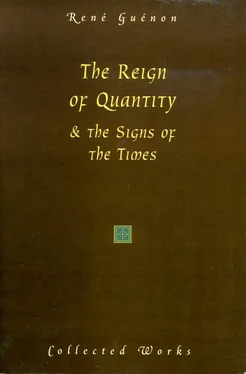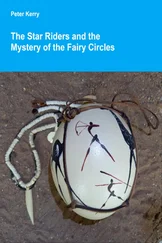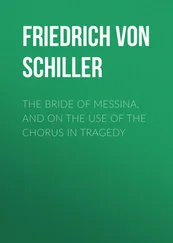The point of view adopted so far has been mainly concerned with the ‘solidification’ of the world, having as its end-point nothing other than the ‘reign of quantity’, of which the use of metals is only an aspect, this being the point of view that has actually been most obviously manifested in all fields up to the phase at which the world has arrived today. But things can go further yet, and the metals, by virtue of the subtle influences attached to them, can also play a part in a later phase leading more directly to the final dissolution. During the course of the period that may be called ‘materialistic’, these subtle influences have undoubtedly passed more or less into a latent state, like everything else that is outside the limits of the purely corporeal order; but this does not mean that they have ceased to exist, nor even that they have entirely ceased to act, though in a hidden manner, of which the ‘satanic’ side of ‘mechanistic’ theory and practice, especially (but not solely) in its destructive applications, is after all but a manifestation, though naturally the materialists can have no suspicion of the fact. These same influences then need only wait for a favorable opportunity to assert their activity more openly, of course always in the same ‘malefic’ direction, because so far as ‘benefic’ influences are concerned the world has so to speak been closed to them by the profane attitude of modernity: moreover their opportunity may no longer be very far distant, for the instability that nowadays continues to increase in every domain shows clearly that the point corresponding to the greatest effective predominance of ‘solidity’ and ‘materiality’ has already been passed.
It may facilitate the understanding of what has just been said if it is pointed out that, according to traditional symbolism, the metals are in relation not only with the ‘subterranean fire’ as already indicated, but also with the ‘hidden treasure’, all these matters being rather closely interwoven, for reasons that cannot possibly be developed here, but that can go some way toward explaining how it is that human interventions are capable of provoking, or more exactly of ‘releasing’, certain natural cataclysms. However that may be, all the ‘legends’ (using the language of today) about these ‘treasures’ show clearly that their ‘guardians’, who are none other than the subtle influences attached to them, are psychic ‘entities’ that it is extremely dangerous for anyone to approach who has not got the required ‘qualifications’ and does not take the necessary precautions; but what precautions could the moderns, completely ignorant of such matters, in fact be expected to take in this matter? They are all too obviously lacking in any ‘qualification’, as well as in any means of action in the domain in question, for it eludes them in consequence of the attitude they adopt toward anything and everything. True enough, they constantly boast about ‘conquering the forces of nature’, but they are certainly far from suspecting that behind these same forces, which they look upon as being exclusively corporeal, there is something of another order, of which the apparent forces are really but the vehicles and as it were the outward likenesses; it is this other thing that might well one day revolt and finally turn against those who have failed to recognize it.
It will be as well to add here incidentally a further note on something that may perhaps seem to be only a singularity or a curiosity, but will furnish the occasion for some further remarks later: the ‘guardians of the hidden treasure’, who are at the same time the smiths working in the ‘subterranean fire’, are represented in the different ‘legends’ sometimes as giants and sometimes as dwarfs. Something of the kind is also found in the case of the Kabires, and this shows that this category of symbolism is, like others, capable of being applied so as to relate it to a superior order; but owing to the conditions of our own period, it is necessary to adhere to a point of view from which only what may be called its ‘infernal’ aspect can be seen; in other words, the said conditions are no more than an expression of influences belonging to the inferior and ‘tenebrous’ side of what may be called the ‘cosmic psychism’; and, as will appear more clearly as this study proceeds, influences of this sort, in their multitudinous forms, are today actively threatening the ‘solidity’ of the world.
To complete this short summary, one more point related to the ‘malefic’ aspect of the influence of metals must be mentioned, and that is the frequent prohibition of the carrying of metallic objects while certain rites are being accomplished, both in the case of exoteric rites, [97] This prohibition is in force, at least in principle, notably in the Islamic rites of pilgrimage, though in fact it is no longer strictly observed today; furthermore, anyone who has accomplished these rites in their entirety, including that part of them that constitutes their most ‘interior’ aspect, must thenceforth abstain from all work involving the use of fire, and this includes more particularly the work of blacksmiths and metallurgists.
and in the case of initiatic rites properly so called. [98] In Western initiations this takes the form, in the ritual preparation of the recipient, of what is designated as the ‘stripping of metals’. It could be said that in a case of this kind the metals, apart from their real power to affect adversely the transmission of ‘spiritual influences’, are taken as representing more or less what the Hebrew Kabbalah calls the ‘rinds’ or the ‘shells’ ( qlippoth ), meaning all that is most inferior in the subtle domain, thus constituting, if the expression be allowable, the infra-corporeal ‘pit’ of our world.
The character of all rules of this kind is no doubt principally symbolical, and from that character they derive their profound significance; but it is important not to lose sight of the fact that the truly traditional symbolism (which must on no account be confused with the false interpretations and counterfeits to which the moderns sometimes wrongly apply these words) [99] Thus, those who in the first half of the nineteenth century wrote ‘histories of religion’ invented something to which they applied the word ‘symbolical’, which was a system of interpretation having only a very remote connection with true symbolism; as for merely literary misuses of the word ‘symbolism’, they are evidently not worth the trouble of mentioning.
always has an effective meaning, and that its ritual applications in particular have perfectly real effects, although the narrowly limited faculties of modern man can rarely perceive them. This is not a question of vaguely ‘idealistic’ notions, but on the contrary concerns things of which the reality is sometimes manifested in a more or less ‘tangible’ way; if that were not the case, what would be the explanation of the fact that there are people who, when they are in a particular spiritual state, cannot endure the least contact, even indirect, with metals, and that this is so even if the contact has been brought about without their knowledge and in conditions such that it is impossible that they should be aware of it through their bodily senses, thereby necessarily excluding the psychological and over-simplified explanation of ‘auto-suggestion’? [100] The case of Shri Ramakrishna can be cited as a known example.
It can further be stated that a contact of this kind can in comparable cases go so far as to produce outwardly the physiological effects of a real burn, and it must be admitted that such facts ought to provide material for reflection, if the moderns were still capable of anything of the kind; but the profane and materialistic attitude and the prejudices arising out of it have plunged them into an incurable blindness.
Читать дальше











